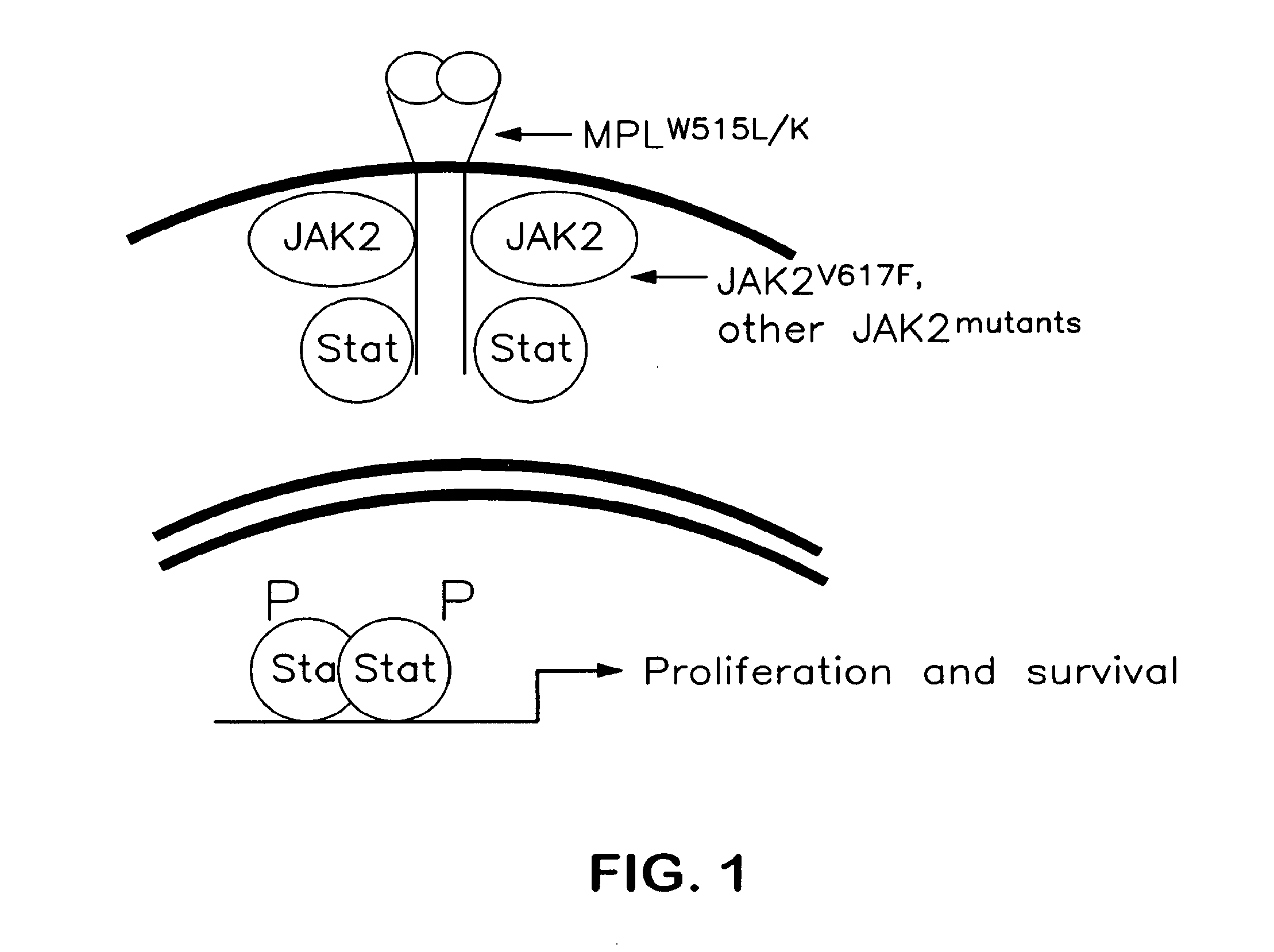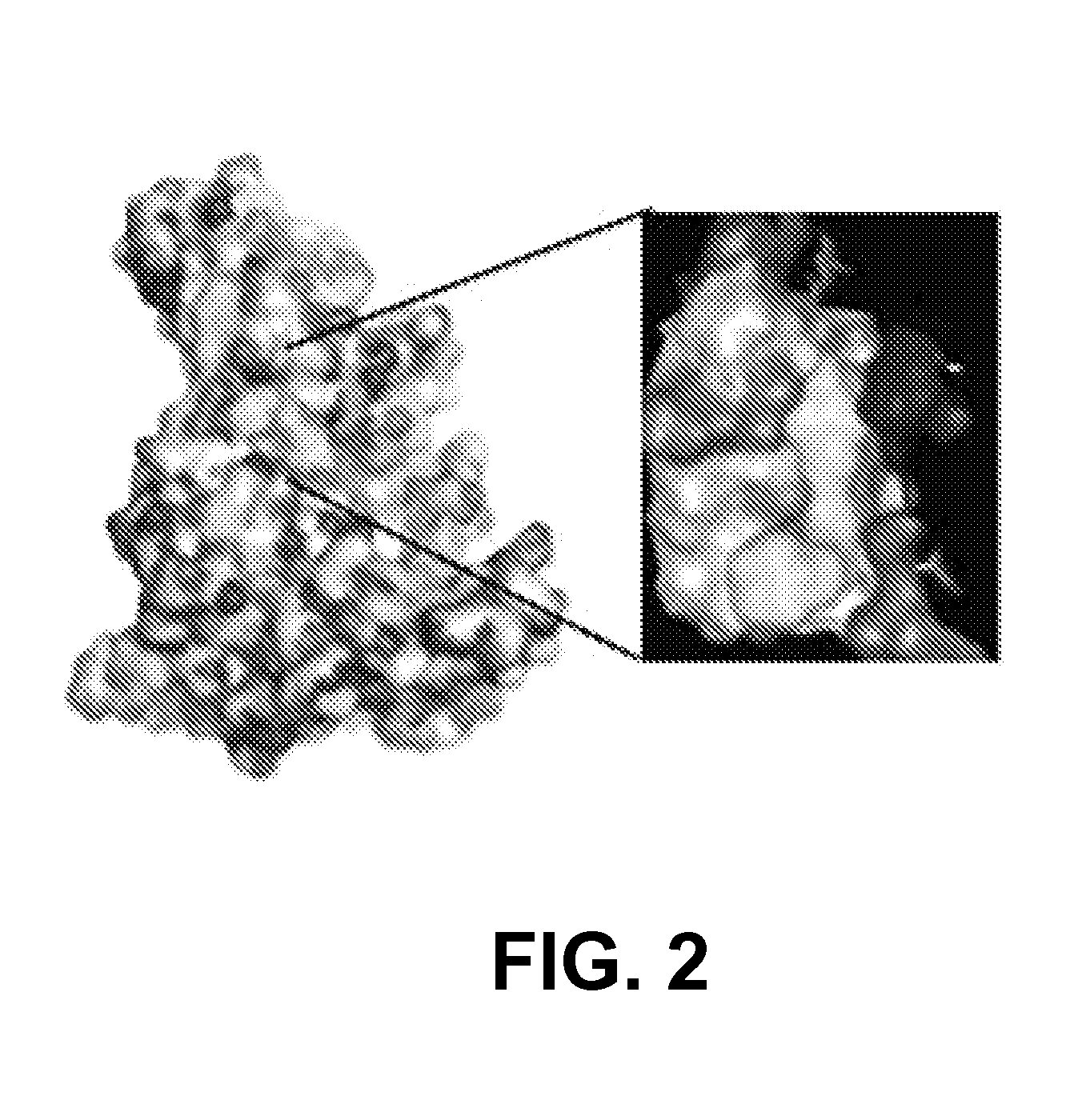Bi-aryl meta-pyrimidine inhibitors of kinases
- Summary
- Abstract
- Description
- Claims
- Application Information
AI Technical Summary
Benefits of technology
Problems solved by technology
Method used
Image
Examples
example 1
General Methods
[0153]All experiments were performed under anhydrous conditions (i.e. dry solvents) in an atmosphere of argon, except where stated, using oven-dried apparatus and employing standard techniques in handling air-sensitive materials. Aqueous solutions of sodium bicarbonate (NaHCO3) and sodium chloride (brine) were saturated. Analytical thin layer chromatography (TLC) was carried out on Merck Kieselgel 60 F254 plates with visualization by ultraviolet and / or anisaldehyde, potassium permanganate or phosphomolybdic acid dips. Reverse-phase HPLC chromatography was carried out on Gilson 215 liquid handler equipped with Waters Symmetry Shield™ RP18 7 μm (40×100 mm) Prep-Pak cartridge. Mobile phase consisted of standard acetonitrile (ACN) and DI Water, each with 0.1% TFA added. Purification was carried out at a flow rate of 40 mL / min. NMR spectra: 1H Nuclear magnetic resonance spectra were recorded at 500 MHz. Data are presented as follows: chemical shift, multiplicity (s=singlet...
example 2
N4-(4-Methoxy-phenyl)-pyrimidine-2,4-diamine (Intermediate 1)
[0154]
[0155]A mixture of 4-chloro-pyrimidin-2-ylamine (0.30 g, 2.3 mmol) and 4-methoxy-phenylamine (0.30 g, 2.4 mmol) were suspended in acetic acid (10 mL) and heated at 100° C. for 2 h. The mixture was allowed to cool to room temperature and acetic acid removed under reduced pressure. The residue was taken in water (20 mL) and neutralized to pH˜7 with 7M of NaOH solution. The resulting solution was extracted with EtOAc (30 mL) and the organic layer separated. The organic layer was washed with brine, dried over MgSO4 and filtered. The filtrate was concentrated in vacuo and the crude product purified by flash chromatography on silica gel (hexane to EtOAc) to afford the title intermediate 1 (0.23 g, 45%) as a white solid. 1H NMR (500 MHz, DMSO-d6): 3.69 (s, 3H), 5.84 (d, J=5.8 Hz, 1H), 6.79 (d, J=9.1 Hz, 2H), 7.63 (d, J=9.1 Hz, 2H), 7.78 (d, J=5.8 Hz, 1H), 8.65 (s, 1H); MS (ESI+): m / z 217 (M+H)+.
example 3
N4-(4-Methoxy-phenyl)-N2-[4-(2-pyrrolidin-1-yl-ethoxy)-phenyl]-pyrimidine-2,4-diamine (Compound I)
[0156]
[0157]To synthesize compound I, intermediate 1 described above and intermediate 2 were used. Intermediate 2, 1-[2-(4-bromo-phenoxy)-ethyl]-pyrrolidine, shown below is available commercially, and was used as received.
[0158]A suspension of intermediate 1 (74 mg, 0.34 mmol), intermediate 2 (0.10 g, 0.37 mmol), Pd(OAc)2 (5 mg, 0.022 mmol), Xantphos (26 mg, 0.05 mmol) and potassium tert-butoxide (80 mg, 0.71 mmol) in dioxane / DMF (3 / 1; 4 mL) was sealed in a microwave reaction tube and irradiated with microwave at 160° C. for 15 min. After cooling to room temperature, the cap was removed and the resulting mixture filtered and the filtered solid washed with DCM. The filtrate was concentrated and the residue purified by HPLC to afford the title compound I (20 mg of TFA salt, 11%) as a brown solid. 1H NMR (500 MHz, DMSO-d6): 1.80-1.95 (m, 2H), 1.95-2.10 (m, 2H), 3.05-3.20 (m, 2H), 3.55-3.65...
PUM
| Property | Measurement | Unit |
|---|---|---|
| Volume | aaaaa | aaaaa |
| Volume | aaaaa | aaaaa |
| Volume | aaaaa | aaaaa |
Abstract
Description
Claims
Application Information
 Login to View More
Login to View More - R&D
- Intellectual Property
- Life Sciences
- Materials
- Tech Scout
- Unparalleled Data Quality
- Higher Quality Content
- 60% Fewer Hallucinations
Browse by: Latest US Patents, China's latest patents, Technical Efficacy Thesaurus, Application Domain, Technology Topic, Popular Technical Reports.
© 2025 PatSnap. All rights reserved.Legal|Privacy policy|Modern Slavery Act Transparency Statement|Sitemap|About US| Contact US: help@patsnap.com



